A Brief History of the Borders Abbeys
By Mark Wright
My role here at Mickledore is to create new holidays. Being a Borderer and having lived for 15 years in the shadow of the Eildon Hills, I was delighted when I got the go ahead to add the Borders Abbeys Way to our growing collection of walking holidays.
I couldn’t wait to share many of the riverside and woodland trails I’d walked countless times over the years. I had an immense feeling of pride inviting you in to enjoy a little corner of my homeland.
My mind was full of questions. Will you, like me, find peacefulness walking the banks of the Tweed and the Teviot? Will you marvel at the neoclassical Temple of the Muses by Dryburgh Suspension Bridge and when there, will you make the short detour to view the thirty foot statue of William Wallace as I do? Will you skirt or scale the magnificent Eildon Hills above Melrose? Will you find joy in the spacious Borders farmlands with their flower filled meadows and wealth of birdlife and wildlife? Will you feel the sense of history as you pass through the lands where King Robert the Bruce launched his raids into England, emerging victorious with the re-establishment of an independent Scottish monarchy? The questions were endless. I so want you to enjoy the borderlands as much as I do. I want you to get it.
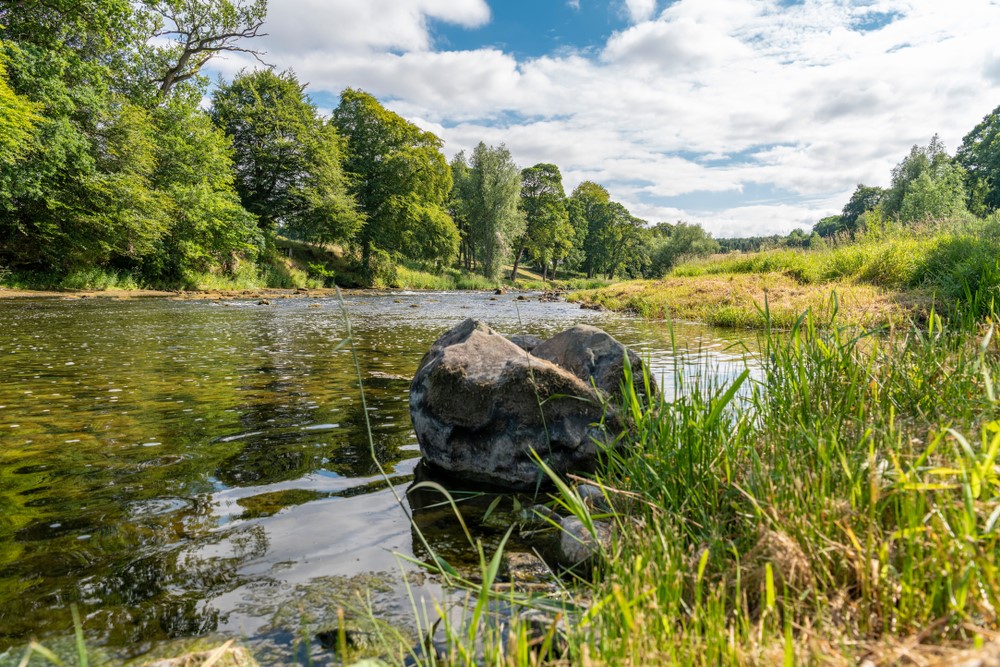
In addition to the gentle paths and breathtakingly beautiful views, the draw of course is the four abbeys founded in the first half of the 12th century on the command of King David I of Scotland, and it’s here we focus our attention as we offer up a brief history of each of them. Admittedly, very brief. For the full story of this one time perilous and lawless frontier you’ll have to visit them yourself.
Melrose Abbey
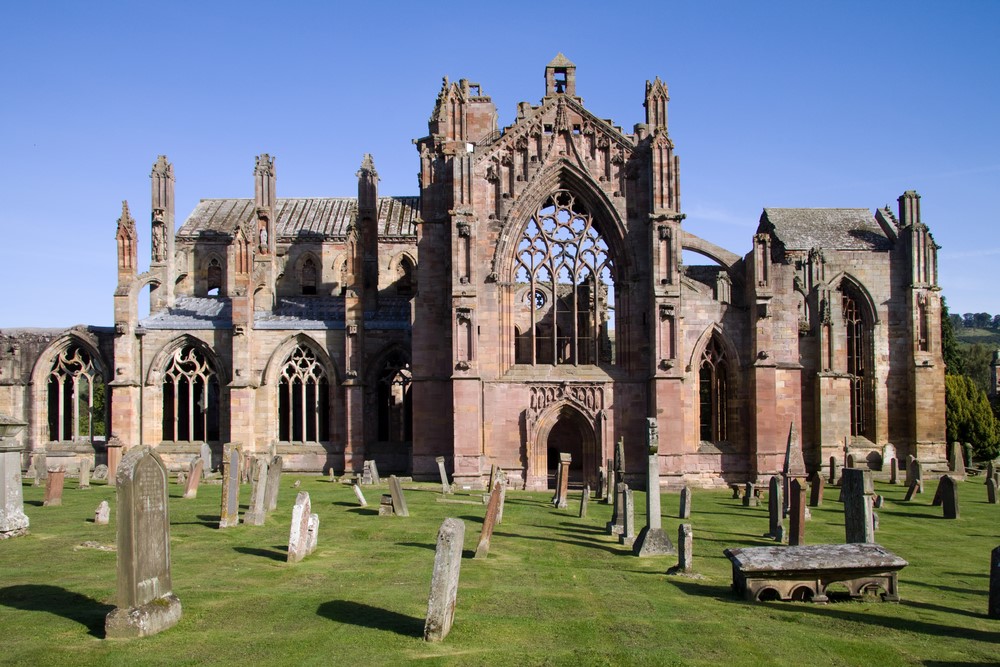
Founded in 1136 by monks of the Cistercian Order, Melrose Abbey is one of the most striking ruined abbeys in the country.
It was King David I of Scotland’s wish that the abbey be located two miles to the east, on the site of an earlier Celtic monastery founded by Saint Aiden in AD635, however the monks convinced the king to agree to the current site claiming it was more suitable for agriculture. Furthermore, the monks preference was on the paved Roman road, Dere Street, the main route connecting Edinburgh with England, making it perfectly situated to provide accommodation, food and other services to travellers.
It is thought Melrose Abbey contains the heart of Robert the Bruce, King of Scots (1274-1329). It is believed his heart was buried there in 1330 or 1331. The remainder of Bruce’s body was interred at Dunfermline Abbey. A lead container, conceivably containing the King’s heart, was found buried below the abbey’s chapter house floor in 1996. Never opened, the container was reburied at the abbey on 22 June 1998. Also buried at the abbey is King Alexander of Scotland (1198-1249).
The abbey was almost completely destroyed in 1322 by the army of King Edward II of England (1284-1327). Then again 63 years later by King Richard II of England (1367-1400), resulting in damage so severe, masons laboured for more than a century to restore the abbey.
The abbey was yet again severely damaged during an offensive led by the Earl of Hertford in 1544 on behalf of King Henry VIII of England. It was never rebuilt.
Dryburgh Abbey
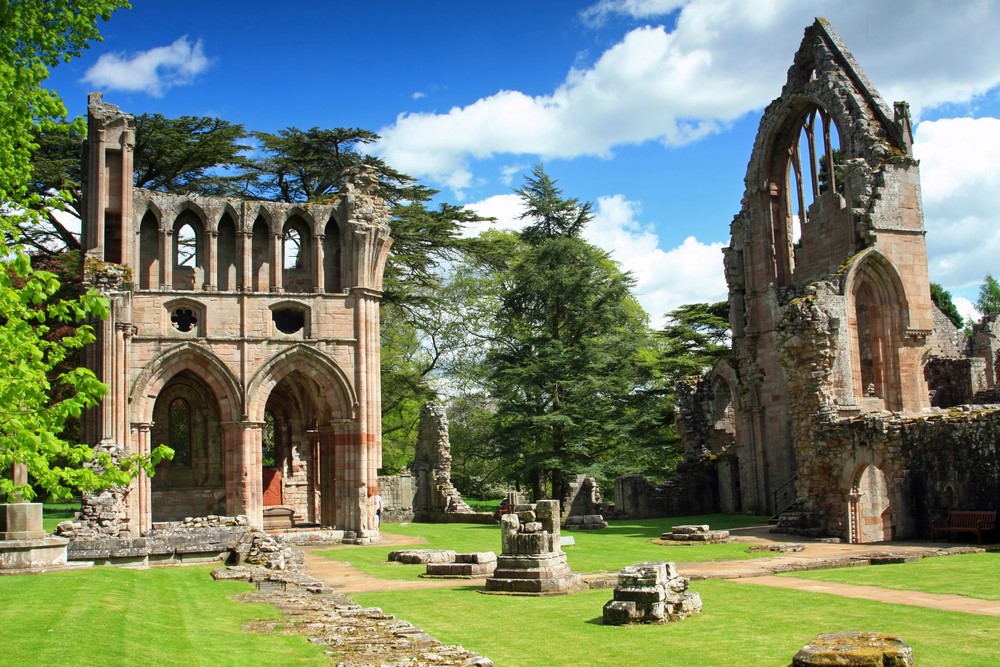
Built in 1150 by canons of the Premonstratensian Order, Dryburgh Abbey sits approximately four miles east of Melrose on the banks of the River Tweed. Historical documents show that the abbey was constructed on the remains of an earlier Celtic monastery. The abbey was founded with the agreement of King David I of Scotland by Hugh de Morville, an Anglo-Norman noble and High Lord Constable of Scotland.
King Robert the Bruce used the abbey as a base for raids into England in 1316. Revenge attacks came at the hands of the English King Edward II in 1322 resulting in the abbey being looted and severely damaged by fire. Along with the other Borders abbeys, Dryburgh remained in hands of King Edward until the middle of the 14th century, when the region reverted to Scots control under King David II of Scotland (1324-1371). Enraged by his losses, King Edward mounted a brutal campaign of retribution resulting in Edinburgh being sacked and burned. On their return to England through the Borders, Edward’s armies once again looted and set fire to Dryburgh Abbey.
Scottish historical novelist, poet, playwright, and historian, Sir Walter Scott who resided at Abbotsford House near Melrose is buried at the abbey. Also buried within the grounds of the abbey is Field Marshall Sir Douglas Haig, commander of British forces on the Western Front from 1915 until the end of World War I in 1918.
Kelso Abbey
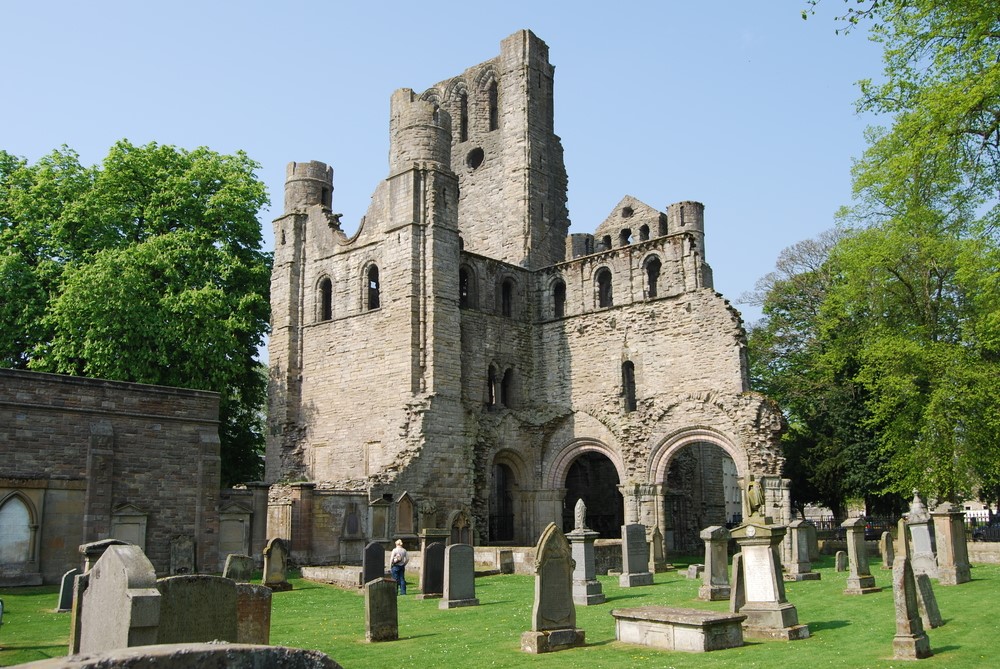
Founded in 1128 by monks of the Tironesian Order, Kelso Abbey is the oldest of the Borders abbeys, and was King David I of Scotland’s base in the Lowlands.
Once one of the wealthiest abbeys in Scotland, Kelso Abbey’s vast estate contained Scotland’s finest agricultural land and lucrative fisheries on the Tweed and Teviot rivers. Nevertheless, it suffered the same ravages as the other Borders abbeys and was burned and looted on several of occasions. Only the west tower and transept remain today.
King James II of Scotland (1430-1460) was killed within sight of Kelso Abbey during a battle securing Scottish repossession of nearby Roxburgh Castle from the English. Following the death of his father, a hasty coronation took place at the abbey for the infant successor, King James III of Scotland (1451-1488).
Following the Scottish Reformation in 1560, the abbey’s estates were granted to Robert Ker of Cessford, an ancestor of the current Duke of Roxburghe, who resides at Floors Castle on the outskirts of Kelso. Several generations of Duke of Roxburghe and members of their family are buried at Kelso Abbey.
Jedburgh Abbey
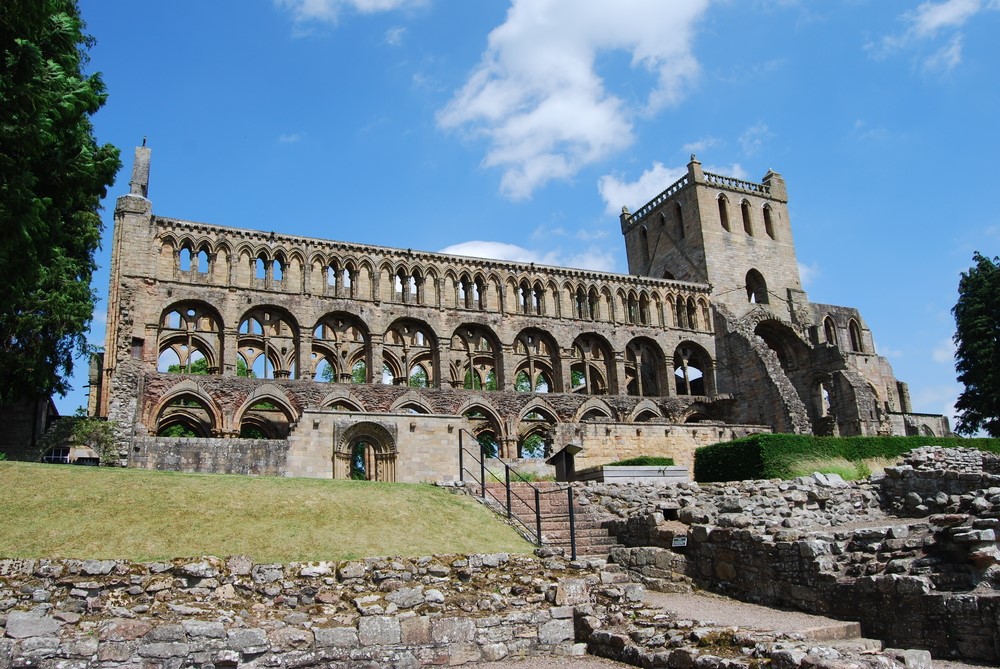
In 1118 a priory was founded at Jedburgh by canons of the Augustinian Order. Following the ascension of King David I to the Scottish throne in 1124 the priory was elevated to the status of abbey, upon which it gained extensive estate lands in both the Borders and Northumberland.
In 1285 King Alexander III of Scotland (1241-1286) married Yolande of Dreux at Jedburgh Abbey, a union that accentuated Scottish independence from England on account of Yolande’s French lineage. The King’s first wife, who died in 1275, had been the daughter of King Henry III of England (1207-1272).
Of the four Borders abbeys, Jedburgh was attacked most frequently. In 1297 English armies severely damaged the abbey in revenge for the victory of Sir William Wallace over the Earl of Surrey at Stirling Bridge. In 1346 English armies once again attacked the abbey following a rout of Scottish forces at the Battle of Neville’s Cross near Durham.
Further attacks came in 1410 and 1416 by forces loyal to the Duke of Albany, a merciless Scottish politician and brother of King Robert III of Scotland (1390-1406). In 1464 the abbey was targeted by the Earl of Warwick, then in 1523 both the abbey and the town of Jedburgh were set on fire during an assault by the Earl of Surrey. The seventh and final attack was in 1544 by the forces of the Earl of Hereford. Jedburgh Abbey’s ruins later became a Protestant parish kirk. An embarrassingly shameful end for a Catholic abbey.
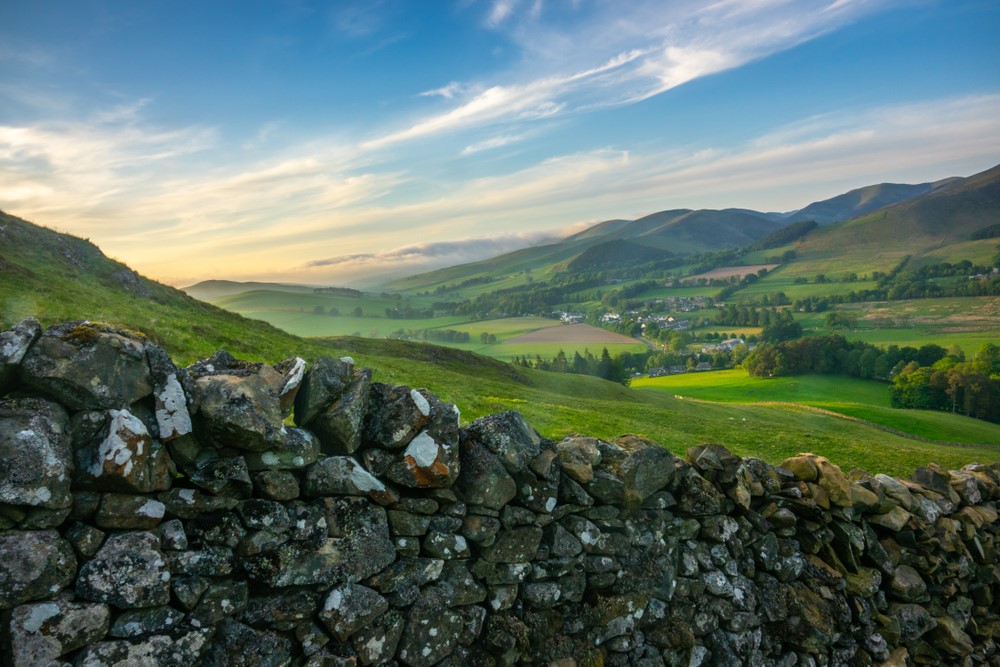
The History of these towns in not limited to the Abbeys. Mary Queen of Scots for instance stayed at Jedburgh in 1566, and the visitor centre, a 16th century tower house set in attractive gardens, tells the story of her tragic life. A Rogues Gallery examines the individuals involved in Mary’s life and the Last Letter Room tells of her last thoughts ahead of her execution.
Beyond the abbeys lie the textile towns of Hawick and Selkirk, they have a history steeped in industrial heritage. Famous for their fine quality knitwear and cashmere, their story too is a fascinating one. Take time to learn a little about it as you pass through.
I hope you’ll walk the Abbeys Way and enjoy the hospitality of the Borders folk, eat delicious food and immerse yourself in the peace and tranquility that is the Borders today. But stop a while, and imagine those days gone by, the days of King David I, Robert the Bruce and Mary Queen of Scots.
For more information on the Borders Abbeys Way and help choosing your itinerary email us [email protected] or call 017687 72335 to speak with one of our walking holiday experts.